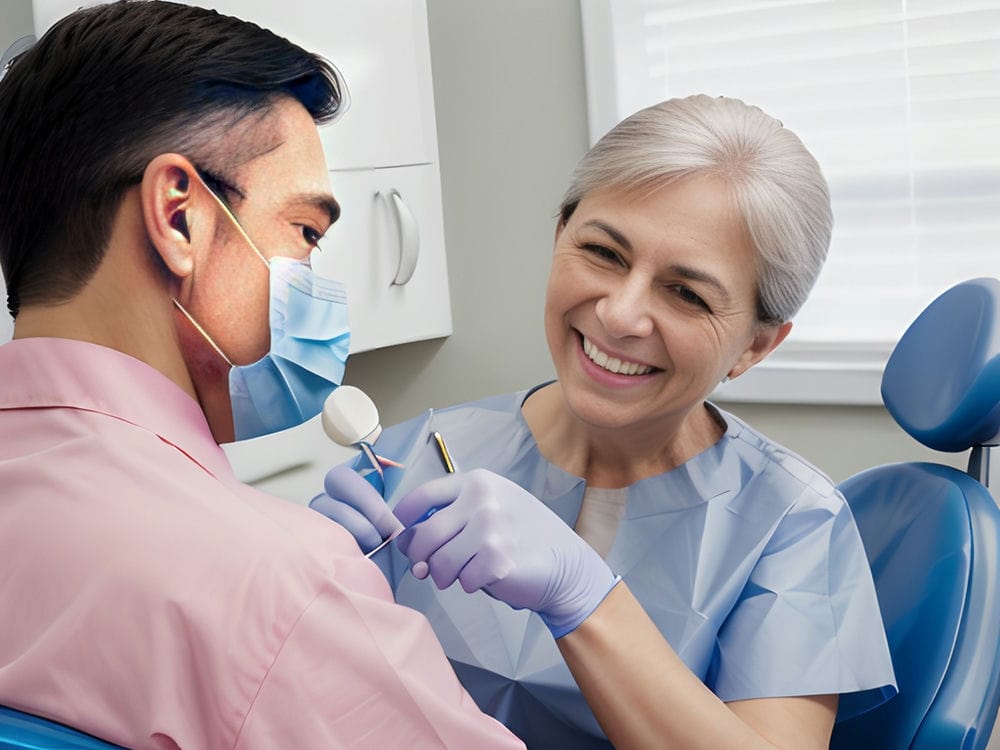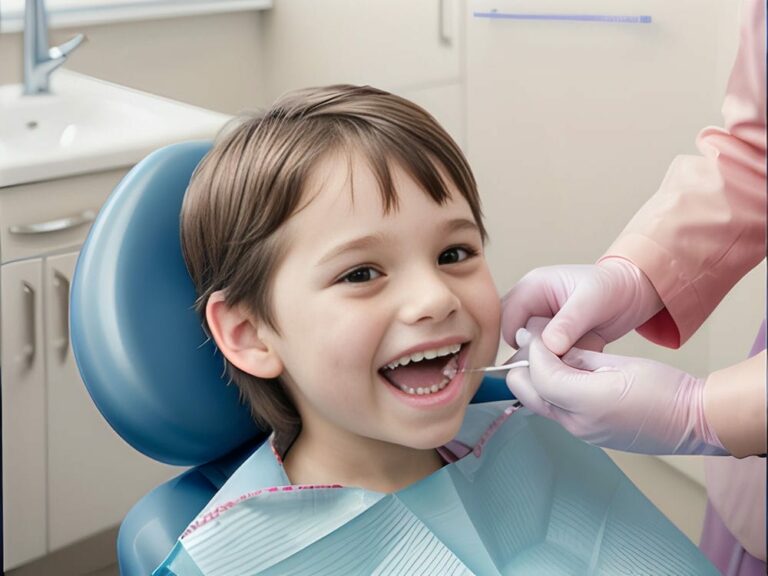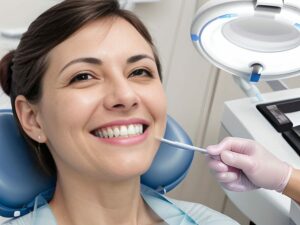Understanding the Science of Stem Cells in Dental Regenerative Medicine
Understanding the Science of Stem Cells in Dental Regenerative Medicine
Stem cells have gained significant attention in the field of dental regenerative medicine due to their immense potential in treating various dental diseases. These unique cells possess the remarkable ability to differentiate into different cell types, making them essential for tissue regeneration. By understanding the science behind stem cells, researchers hope to revolutionize dental treatments and improve overall dental health.
One of the key aspects of stem cell research is identifying different sources of these cells. Dental stem cells can be found in various parts of the oral cavity, including teeth, periodontal ligaments, and dental pulp. These sources offer an abundant supply of stem cells that can be easily harvested during routine dental procedures. Additionally, advancements in technology and techniques have allowed researchers to isolate and culture these cells effectively for future use.
Furthermore, understanding how stem cells function is crucial for harnessing their regenerative potential. Stem cells have the capability to self-renew and differentiate into specialized cell types such as bone, cartilage, and nerve cells. This unique characteristic allows them to repair damaged tissues and promote regeneration in areas affected by dental diseases or injuries. By utilizing stem cells in dental treatments, it is possible to enhance healing processes and restore oral functions more effectively.
In summary, comprehending the science behind stem cells is vital for unlocking their potential in dental regenerative medicine. The identification of various sources and their functionality provides researchers with a foundation for developing innovative treatments that aim at improving dental health through tissue regeneration. With further advancements in this field, it is hopeful that stem cell-based therapies will become a standard part of dental care, offering patients new opportunities for successful treatment outcomes.
The Role of Stem Cells in Treating Oral Diseases
Stem cell therapy is a promising field in biotechnology that offers potential solutions for treating various oral diseases. One of the primary advantages of stem cells is their ability to regenerate and repair damaged oral tissue. By harnessing this regenerative power, researchers aim to develop innovative treatments that can effectively address oral diseases such as periodontal disease, dental caries, and even oral cancer.
In periodontal disease, for example, stem cell therapy has shown promise in regenerating lost or damaged gum tissue and supporting structures. By implanting stem cells into the affected area, they can differentiate into different types of cells required for healing, including bone and connective tissue cells. This approach not only promotes tissue regeneration but also enhances the overall function and stability of the affected area.
Similarly, in cases of dental caries or cavities, stem cell therapy holds potential for regenerating tooth structure. By utilizing stem cells from dental pulp or other sources, researchers are exploring methods to stimulate these cells to differentiate into dentin-forming cells. This could revolutionize the treatment of cavities by promoting natural tooth repair instead of relying on traditional fillings or restorations.
Furthermore, stem cell therapy may also have applications in treating oral cancer. By targeting cancerous tissues with specific types of stem cells, researchers hope to inhibit tumor growth while promoting healthy tissue regeneration. This approach could potentially enhance treatment outcomes and improve the quality of life for patients undergoing cancer therapies.
Overall, stem cell therapy offers exciting possibilities for improving oral health by harnessing the regenerative potential of these unique cells. With continued research and advancements in biotechnology, we can expect to see further developments in this field that will revolutionize the way we treat oral diseases.
Exploring the Potential of Dental Stem Cells for Tooth Regeneration
Stem cell therapy is showing great promise in the field of oral health, particularly in the treatment of tooth decay, gum disease, and even oral surgery. Researchers are exploring the potential of dental stem cells to regenerate tooth structure and support damaged gum tissue.
Tooth decay is a common dental problem that often requires fillings or restorations. However, with stem cell therapy, there is the potential for natural tooth repair. By utilizing dental stem cells, researchers are working on methods to stimulate these cells to differentiate into dentin-forming cells. This could revolutionize the treatment of cavities by promoting the growth of new tooth structure instead of relying on traditional treatments.
Gum disease is another oral health issue that can cause significant damage to the gums and supporting structures. Stem cell therapy has shown promise in regenerating lost or damaged gum tissue. By implanting stem cells into the affected area, they can differentiate into various types of cells required for healing, including bone and connective tissue cells. This approach not only promotes tissue regeneration but also enhances the overall function and stability of the affected area.
In addition to tooth decay and gum disease, stem cell therapy may also have applications in oral surgery procedures. By harnessing the regenerative power of stem cells, researchers hope to promote faster healing after surgical interventions such as tooth extractions or dental implants. This could potentially reduce post-operative complications and improve overall outcomes for patients undergoing oral surgery.
With ongoing research and advancements in biotechnology, we can expect further developments in utilizing dental stem cells for tooth regeneration and treating oral diseases like tooth decay and gum disease. Harnessing the regenerative potential of these unique cells holds great promise in improving oral health outcomes and revolutionizing how we approach treatment options for these conditions.
Tissue Engineering: Harnessing Stem Cells for Oral Health Restoration
Stem cell therapy is revolutionizing the field of oral health by offering potential treatments for dental diseases such as tooth decay, gum disease, and tooth loss. Researchers are exploring the use of dental stem cells to regenerate tooth structure and support damaged gum tissue, providing new opportunities for natural repair and restoration.
Tooth decay, a common dental problem, can now be addressed using stem cell therapy. By stimulating dental stem cells to differentiate into dentin-forming cells, researchers aim to promote the growth of new tooth structure instead of relying on traditional treatments like fillings or restorations. This approach holds promise for transforming the way cavities are treated by promoting natural regeneration.
Furthermore, stem cell therapy has shown potential in regenerating lost or damaged gum tissue caused by gum disease. By implanting stem cells into the affected area, these cells can differentiate into various types of cells required for healing, including bone and connective tissue cells. This not only promotes tissue regeneration but also improves overall function and stability in the affected area.
In addition to treating tooth decay and gum disease, researchers are exploring how stem cell therapy can enhance oral surgery procedures such as tooth extractions or dental implants. By harnessing the regenerative power of stem cells, they hope to promote faster healing after surgical interventions, potentially reducing post-operative complications and improving outcomes for patients.
With ongoing research and advancements in biotechnology, utilizing dental stem cells for tissue regeneration and treating oral diseases holds great promise. This innovative approach has the potential to revolutionize oral health outcomes by offering natural repair options for conditions like tooth decay and gum disease. By harnessing the regenerative potential of dental stem cells, we can look forward to improved treatment options for these conditions without relying solely on traditional methods.
Unraveling the Therapeutic Applications of Stem Cells in Dental Care
Dental research and bioengineering are continuously advancing, offering new possibilities for the treatment of oral diseases. Stem cell therapy is a promising avenue in dental care, with the potential to revolutionize the way we approach conditions such as periodontal disease. By harnessing the regenerative power of stem cells, researchers aim to provide innovative solutions that promote natural healing and restoration.
Periodontal disease, also known as gum disease, affects millions of people worldwide and can lead to tooth loss if left untreated. Traditional treatments focus on managing symptoms and preventing further damage, but stem cell therapy offers a more proactive approach. By implanting stem cells into the affected area, researchers hope to stimulate tissue regeneration and repair damaged gum tissue. This not only addresses the underlying cause of periodontal disease but also improves overall oral health.
In addition to treating periodontal disease, dental research is exploring how stem cell therapy can enhance other aspects of dental care. Bioengineered dental implants, for example, could incorporate stem cells to promote faster healing and integration into the jawbone. This could potentially reduce complications associated with traditional dental implant procedures and improve outcomes for patients.
The field of dental research and bioengineering holds great promise in utilizing stem cells for the treatment of oral diseases. With ongoing advancements in technology and scientific understanding, we can expect to see more innovative approaches that harness the regenerative potential of stem cells. By embracing these advancements, we have the opportunity to transform oral health outcomes and offer patients more effective and natural treatment options for conditions such as periodontal disease.
Advancements in Stem Cell Research for Treating Dental Diseases
Advancements in stem cell research have opened up new possibilities for treating dental diseases and revolutionizing dental care. One area of focus is the oral microbiome, which plays a crucial role in maintaining oral health. Stem cell therapy has the potential to restore balance to the oral microbiome, promoting a healthy environment and preventing the development of diseases such as tooth decay and gum disease.
In addition to targeting the oral microbiome, researchers are also exploring tooth regeneration techniques using stem cells. Traditional treatments for tooth loss typically involve the use of dentures or dental implants. However, these options may not provide a natural-looking or fully functional replacement tooth. By harnessing the regenerative power of stem cells, scientists hope to develop techniques that can stimulate the growth of new teeth, offering a more permanent and aesthetically pleasing solution.
The advancements in stem cell research for treating dental diseases hold promise for improving overall dental care. By focusing on restoring balance to the oral microbiome and developing tooth regeneration techniques, researchers aim to provide more effective and natural treatment options for patients. These advancements have the potential to transform oral health outcomes and enhance the quality of life for individuals suffering from dental diseases.
Overall, stem cell therapy offers exciting possibilities in dental care by targeting the oral microbiome and exploring tooth regeneration techniques. With ongoing advancements in stem cell research, we can expect to see innovative approaches that promote natural healing and restoration in dentistry. By embracing these advancements, we have the opportunity to revolutionize dental care and offer patients more effective and personalized treatment options for various dental diseases.
The Promise of Regenerative Medicine in Dental Treatments
The field of regenerative medicine holds great promise for the future of dental treatments. One area that researchers are exploring is tooth development, specifically the potential of using stem cells to regenerate dental pulp. Dental pulp is a vital component of the tooth, containing nerves and blood vessels that help maintain its health and vitality.
By harnessing the regenerative properties of stem cells, scientists hope to develop techniques that can stimulate the growth of new dental pulp. This could revolutionize dental treatments by providing a more natural and long-lasting solution for damaged or decayed teeth. Instead of relying on traditional methods such as root canal therapy, which involves removing the infected pulp, regenerating dental pulp through stem cell therapy could preserve the integrity and functionality of the tooth.
Furthermore, this approach could also eliminate the need for artificial materials such as fillings or crowns, which may have limitations in terms of durability and aesthetics. By promoting natural tooth regeneration, patients could enjoy restored oral health with teeth that look and function just like their original ones.
The potential for regenerative medicine in dental treatments is vast. With ongoing advancements in stem cell research, we can envision a future where damaged or decayed teeth can be regenerated rather than repaired or replaced. This would not only improve patient outcomes but also reduce the reliance on invasive procedures and artificial materials. By embracing regenerative medicine in dentistry, we have an opportunity to transform the way we approach dental care and provide patients with more effective and personalized treatment options for various dental diseases.
In summary, regenerative medicine offers exciting possibilities for improving dental treatments by focusing on tooth development and utilizing stem cells to regenerate dental pulp. This approach has the potential to revolutionize how we treat damaged or decayed teeth by promoting natural regeneration and eliminating the need for invasive procedures or artificial materials. With continued advancements in research, we can look forward to a future where regenerative medicine plays a significant role in enhancing oral health outcomes for individuals worldwide.
Innovations in Dental Stem Cell Therapy for Oral Tissue Regeneration
The potential of stem cells in treating dental diseases is a topic that has garnered significant interest in the field of regenerative medicine. Researchers are exploring innovative approaches to utilize stem cells for oral tissue regeneration, with the aim of revolutionizing dental treatments.
One area of focus is the use of dental stem cells to regenerate periodontal tissues. Periodontal diseases, such as gingivitis and periodontitis, can lead to the deterioration of gum tissues and tooth loss. By harnessing the regenerative properties of stem cells, scientists hope to develop techniques that can stimulate the growth of new periodontal tissues, promoting healing and restoring oral health.
Another promising application is the use of stem cells for bone regeneration in dental implant procedures. Dental implants are a popular solution for replacing missing teeth, but their success relies on sufficient bone support. By utilizing stem cells to regenerate bone tissue, dentists could enhance the success rate and longevity of dental implants, providing patients with more durable and functional replacements for their natural teeth.
The advancements in dental stem cell therapy hold great promise for improving oral health outcomes and transforming traditional dental treatments. With ongoing research and innovation, we can envision a future where regenerative medicine plays a crucial role in addressing various dental diseases effectively.
In summary, the potential of stem cells in treating dental diseases is vast. By utilizing these remarkable cells for oral tissue regeneration, researchers hope to develop innovative solutions for periodontal diseases and improve the success rate of dental implants. With continued advancements in this field, we can look forward to a future where regenerative medicine revolutionizes how we approach dental care and enhances patient outcomes worldwide.
Breakthroughs in Using Stem Cells to Treat Common Dental Conditions
Breakthroughs in Using Stem Cells to Treat Common Dental Conditions
Recent breakthroughs in the field of regenerative medicine have shown promising results in using stem cells to treat common dental conditions. One such condition is dental caries, or tooth decay, which affects a large portion of the population worldwide. Traditional treatments for tooth decay involve removing the damaged tissue and filling the cavity with materials such as amalgam or composite resin. However, these treatments do not promote natural tissue regeneration. Researchers are now exploring the potential of using stem cells to regenerate dentin, the hard tissue that makes up most of the tooth structure. This approach could revolutionize how we treat tooth decay by stimulating the growth of new dentin and promoting long-term oral health.
Another common dental condition that could benefit from stem cell therapy is pulpitis, inflammation of the dental pulp inside the tooth. Pulpitis can cause severe pain and requires root canal treatment to remove the infected pulp and restore oral health. However, this treatment often weakens the tooth structure and can lead to further complications in the future. By utilizing stem cells, scientists aim to regenerate healthy dental pulp tissue and preserve the natural structure of the tooth. This breakthrough could provide a more sustainable solution for patients suffering from pulpitis and reduce reliance on invasive procedures like root canal treatment.
In addition to treating specific dental conditions, researchers are also exploring ways to use stem cells for overall gum tissue regeneration. Gum recession is a common problem that can lead to sensitivity, tooth loss, and aesthetic concerns. Current treatments involve grafting techniques using synthetic or donor tissues, which may have limitations in terms of availability and compatibility. Stem cell therapy offers a promising alternative by stimulating new gum tissue growth naturally. By harnessing the regenerative properties of stem cells, dentists may be able to provide more effective and long-lasting solutions for gum recession.
With these breakthroughs in using stem cells to treat common dental conditions, we are entering a new era of regenerative dentistry. By promoting natural tissue regeneration and preserving the integrity of the tooth structure, stem cell therapy has the potential to revolutionize how we approach dental treatments and improve patient outcomes. As research in this field continues to advance, we can expect further innovations that will transform the landscape of dental care and provide more effective solutions for patients worldwide.
Future Prospects: Enhancing Oral Health with Dental Stem Cell Technologies
Stem cell therapy holds immense potential for enhancing oral health and revolutionizing the field of dentistry. Researchers are actively exploring the use of dental stem cells to address various dental conditions and promote natural tissue regeneration. By harnessing the regenerative properties of stem cells, dentists may be able to provide more effective and long-lasting solutions for patients worldwide.
One area where dental stem cell therapy shows promise is in treating periodontal disease. This condition affects the supporting structures of the teeth, such as the gums and bone, leading to tooth loss if left untreated. Current treatments focus on managing symptoms rather than promoting regeneration. However, with advancements in stem cell research, scientists are hopeful that they can stimulate the growth of new gum tissue and bone, ultimately restoring oral health and preventing tooth loss.
Another exciting prospect is the use of dental stem cells in orthodontics. Traditional orthodontic treatments, such as braces or aligners, aim to straighten teeth by applying force over a period of time. However, these treatments can be lengthy and uncomfortable for patients. Researchers are investigating whether dental stem cells can be used to guide tooth movement more effectively, potentially reducing treatment time and discomfort.
In conclusion, dental stem cell technologies have the potential to transform how we approach oral health care. By harnessing the regenerative properties of stem cells, researchers are developing innovative treatments that promote natural tissue regeneration and preserve the integrity of the teeth and supporting structures. As this field continues to advance, we can anticipate further breakthroughs that will enhance patient outcomes and improve overall oral health.
FAQs
Q: What are stem cells?,
A: Stem cells are undifferentiated cells that have the ability to develop into different types of specialized cells in the body.,
Q: How can stem cells be used in treating dental diseases?,
A: Stem cells have the potential to regenerate damaged or lost dental tissues, such as tooth enamel, dentin, and dental pulp.,
Q: What dental diseases can be potentially treated with stem cells?,
A: Stem cells can potentially be used to treat dental conditions such as tooth decay, periodontal disease, and tooth loss.,
Q: How are stem cells obtained for dental treatments?,
A: Stem cells can be obtained from various sources, including dental pulp, extracted teeth, and umbilical cord blood.,
Q: Are there any ethical concerns associated with using stem cells?,
A: The use of embryonic stem cells raises ethical concerns, but adult stem cells, such as those found in dental pulp, are considered ethically acceptable.,
Q: What are the advantages of using stem cells in dental treatments?,
A: Using stem cells in dental treatments can promote natural tissue regeneration, reduce the need for invasive procedures, and improve the overall success rate of dental treatments.,
Q: Are stem cell treatments for dental diseases currently available?,
A: While some stem cell treatments for dental diseases are in the experimental stage, they are not yet widely available for routine dental care.,
Q: What are the challenges in using stem cells for dental treatments?,
A: Some of the challenges include ensuring the survival and integration of transplanted stem cells, controlling their differentiation into the desired cell types, and addressing regulatory and safety concerns.,
Q: Can stem cells be used to replace missing teeth?,
A: While research is ongoing, stem cells have the potential to be used in growing new teeth to replace missing ones in the future.,
Q: Are there any risks or side effects associated with stem cell treatments for dental diseases?,
A: As with any medical procedure, there are potential risks and side effects associated with stem cell treatments, including infection, immune rejection, and tumor formation.




















